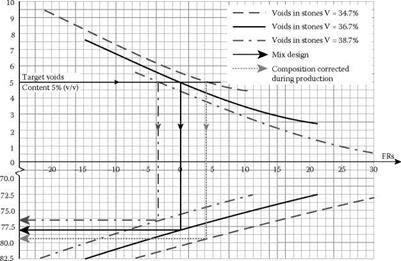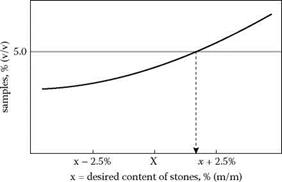Summary of the Method
The determination of air voids based on compacted Marshall samples has been regarded in the Netherlands as the weakest point of the Dutch method of design. According to many engineers, these samples do not reflect the true arrangement of coarse aggregate particles in real pavement. Under real-world conditions, displacement of grains and their close arrangement occur as a result of the high temperature of the pavement and post-compaction; this may be followed by the reduction of air voids among the particles that create the skeleton. Then a significant decrease of air voids in the pavement can result, right up to a complete filling-up with mastic. Subsequently, with a lack of space between the coarse aggregates, they may be shoved aside; the loss of interparticle contact and a bleeding of the mastic onto the surface of a wearing course may occur. Because of that, among other considerations, SMA for heavy traffic is designed with air voids amounting to 5% in the Netherlands, not 3- 4% as in other countries.
Factory or production control adopting the principles depicted in Figure 7.15 appears to be an interesting solution; however, it necessitates the determination of relationships shown there at the design stage, which appears to be a rather time-consuming procedure. Such activities in a laboratory are reasonable provided that there is a putative guarantee of using aggregates of the same origin over the course of at least one season—that is, an unchanged SMA design will be used for a long period. Then one could afford to carry out such thorough tests. The FPC system requires a new series of tests in case of a change of an aggregate supplier.
The aforementioned method outlined in Section 7.4 describes the state of SMA design in the Netherlands in 2004. A series of research studies were conducted there in 2004-2006, leading to a change in the design procedure. Consequently the process of design was simplified in 2007. The new cycle of SMA design is as follows: [46]
• Calculate the FRs ratio.
• Calculate an actual SMA void content based on an additional corrective factor (shift factor), which denotes the relationship between the expected and actual SMA void contents.
• Assess an analyzed SMA composition based on the results of the actual air void content, adjust composition if necessary, and redo the calculations.
• Produce extra mixtures of x + 2.5% and x – 2.5% of the coarse aggregate fraction, followed by an assessment of their parameters.








